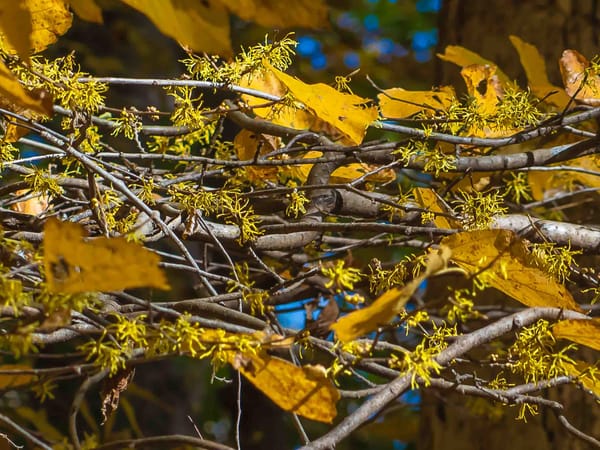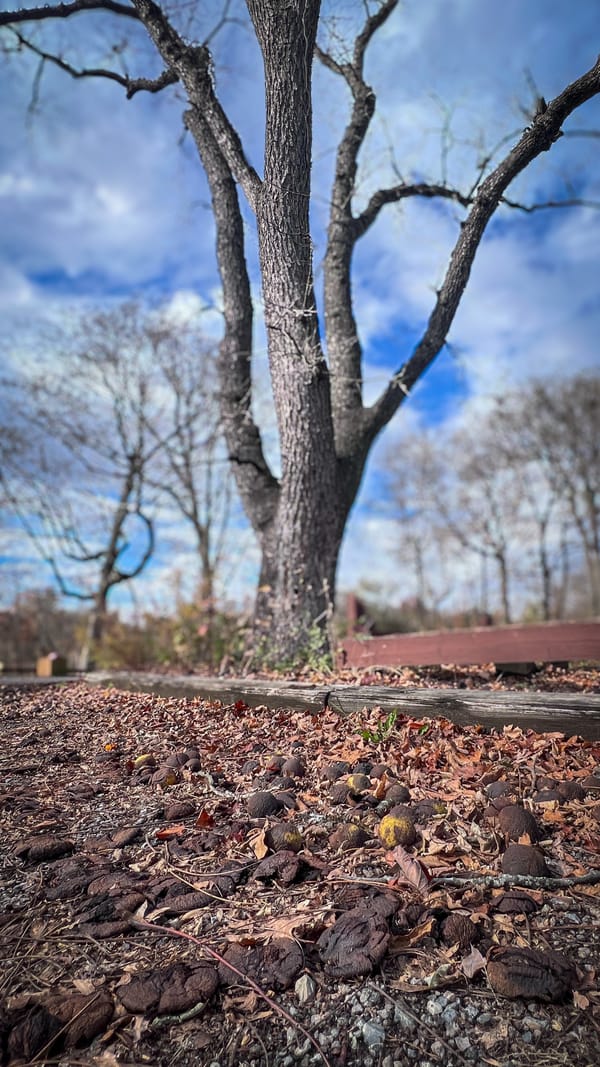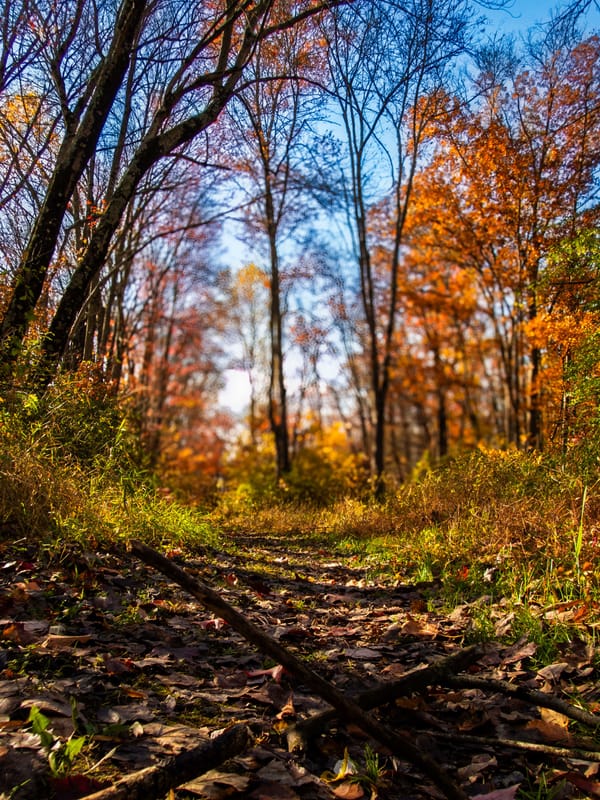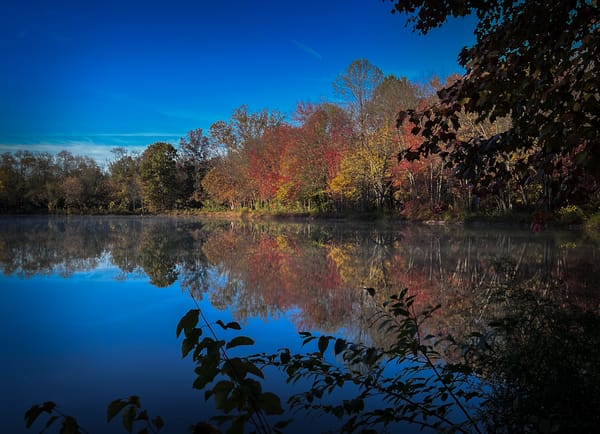Mayapples
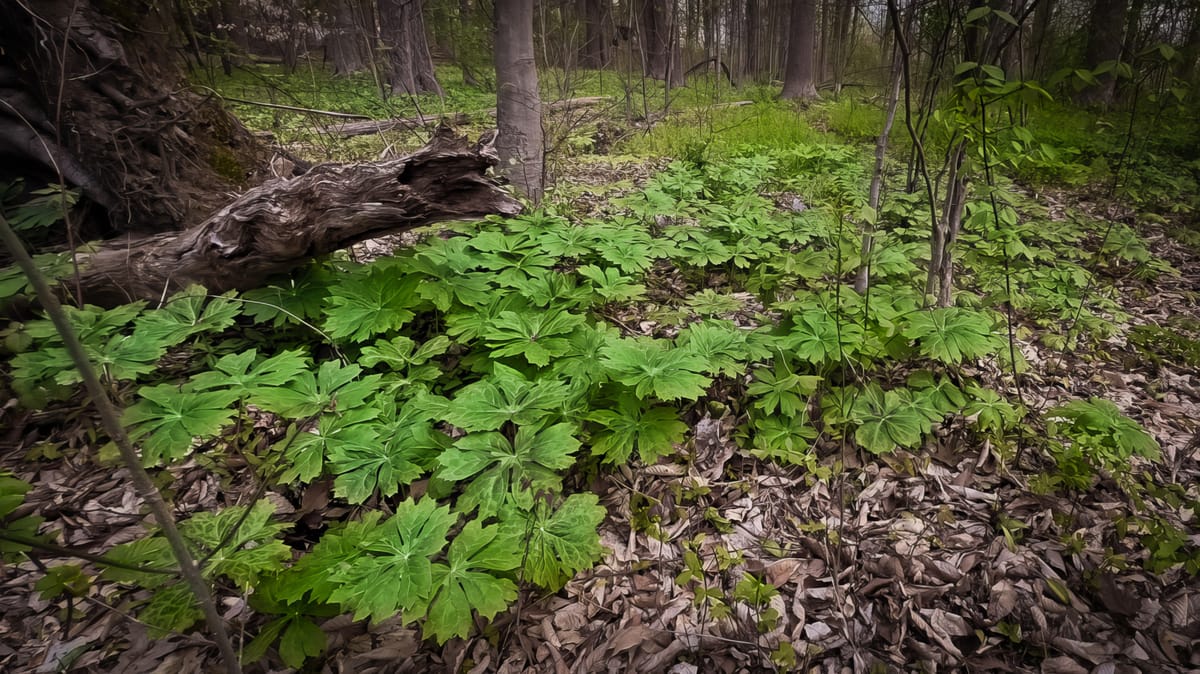
I've been watching the Mayapples (Podophyllum peltatum) emerge and open their umbrella-like leaves over the past few weeks. Colonies of mayapples blanket much of the beech grove having emerged just after the trout lilies to join the parade of spring ephemerals. I'll post pictures of the flowers when they bloom, and the fruit when it ripens.
The scientific name, Podophyllum peltatum, describes what to look for; "Podophyllum" translates to "foot-leaf," (more like a duck's foot than anything else?) while peltatum or "shield-like," indicates the leaves are attached to the stem near their centers, like a shield handle.
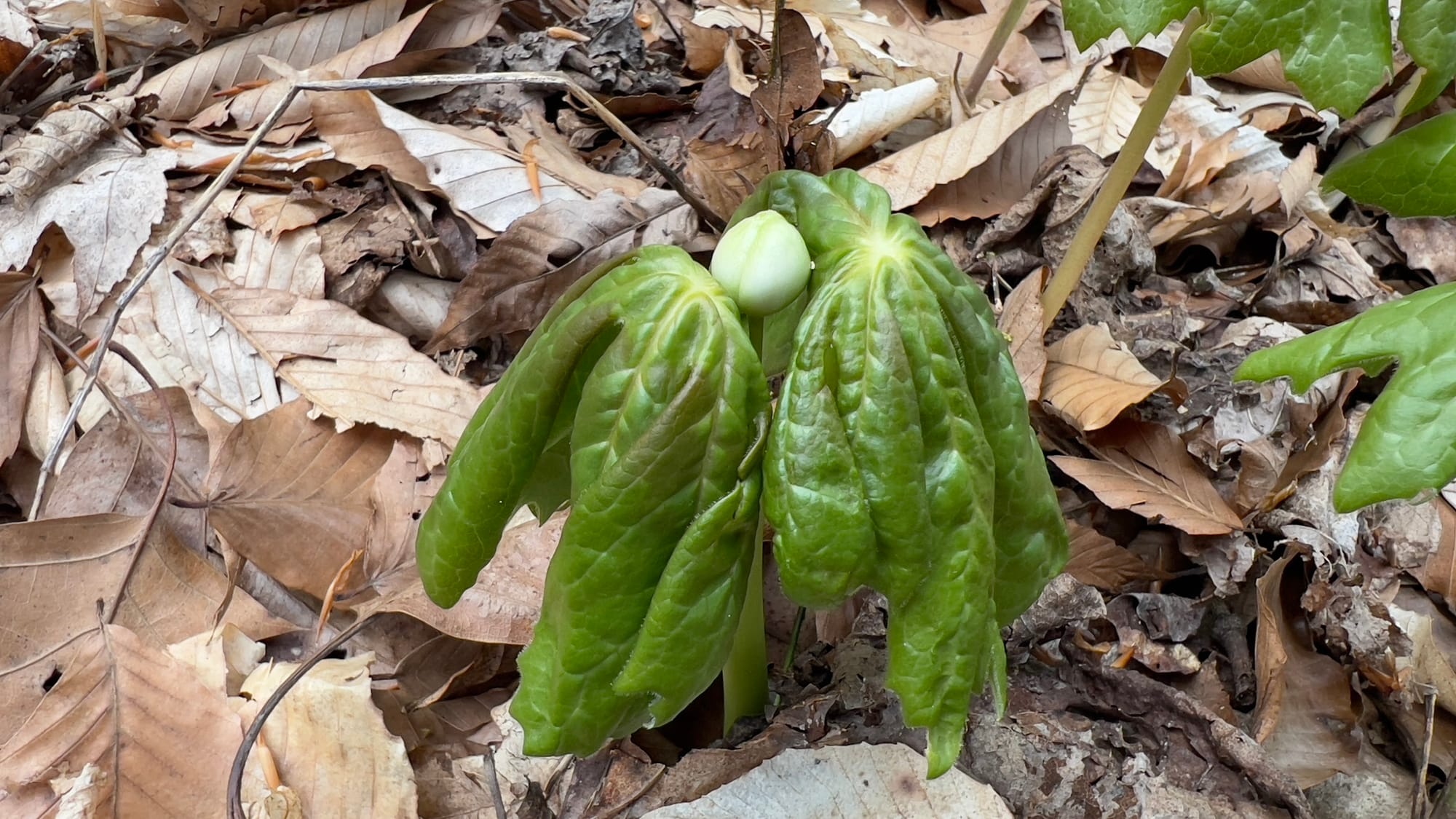
Mayapples have either one or two large, deeply lobed leaves (usually 5-9 lobes). An immature single leafed plant does not flower. Mature plants have a pair of leaves. The leaf stalks (petioles) fork at the stem, where you'll find a single, nodding flower bud this time of year. When it blooms in May the waxy, white (sometimes tinged with pink) flower is 1-2 inches across, with 6-9 petals and a unique, musky fragrance that attracts pollinators.

To produce a Mayapple fruit flowers often require pollen from a different genetic colony. If all goes well a single, fleshy berry about size and shape of a small lemon or egg (1-2 inches long), ripens from green to a soft, golden yellow by late summer.
A number of forest creatures, like Eastern Box Turtles, raccoons and opossums, eat the fruit and disperse its seeds in their droppings. This can spread the plant to new areas and add valuable genetic diversity to the population.
A new seedling may only grow small cotyledon leaves in its first year, and it may take 3-5 years to establish robust roots and rhizome, even then it can be up to 12 years before it is able to flower.
After fruiting the Mayapple loses its leaves and becomes dormant surviving the winter thanks to the energy stored in its extensive rhizome system.
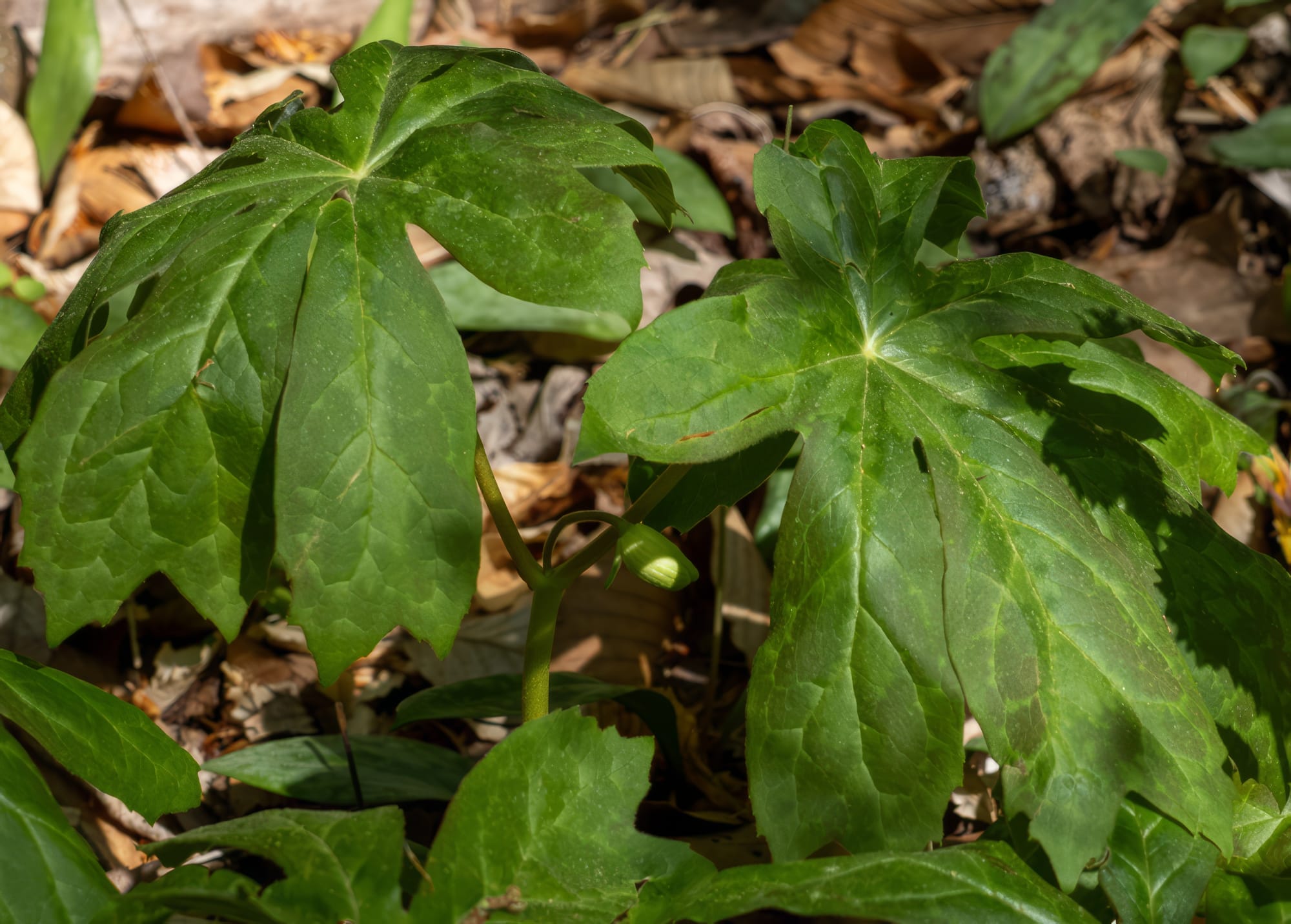
Rhizomes are horizontal underground stems that branch and send up new shoots (ramets) nearby. Rhizomes grow about 4-8 inches each year forming dense, sprawling colonies via cloning making most Mayapples in a patch genetically identical. Large slow-spreading Mayapple colonies may be a century old.
The Mayapple has a potent and dangerously toxic chemistry, so dangerous it would be foolish for anyone reading this to attempt to use the plant medicinally. I want to emphasize ALL parts of the Mayapple - leaves, stems, roots, unripe fruit, and seeds – are highly poisonous; risks far outweigh any potential benefits. Leave the Mayapple undisturbed and admire its beauty from afar.
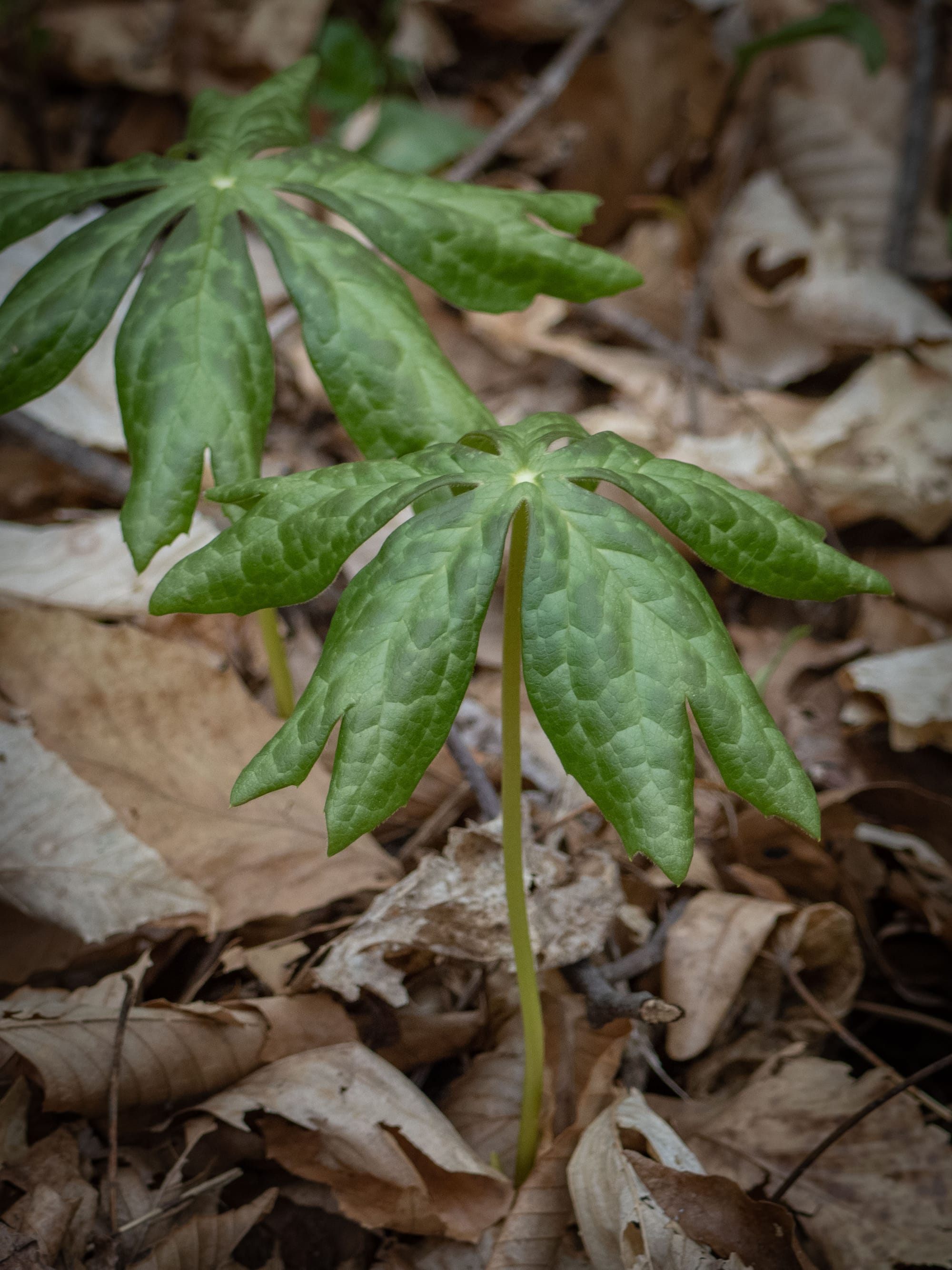
Native American tribes across eastern North America used the rhizome externally to treat warts, and as a purgative with great caution. European colonists also used the plant, mainly as a purgative. Extracts even found their way into historical commercial remedies like "Carter's Little Liver Pills".
In the late 1800s, scientists isolated the primary active compound and dubbed it "podophyllotoxin". They discovered it inhibits cell division, explaining its use against warts and leading to an effective topical treatment. Because of the cell interrupting quality it was tested as an anti-cancer agent but the doses required proved tragically and severely toxic.
In the mid-20th century chemically modified podophyllotoxin created a less toxic, more effective treatment. Eventually drugs developed from the Mayapple became standard components in life-saving chemotherapy.

